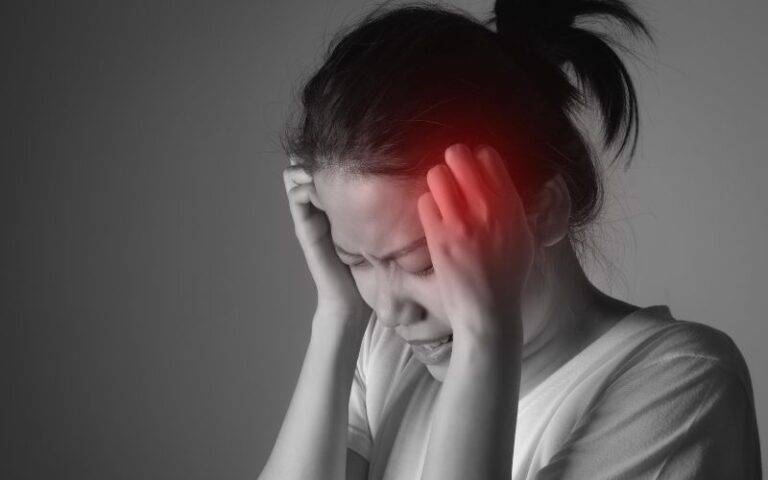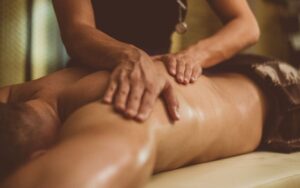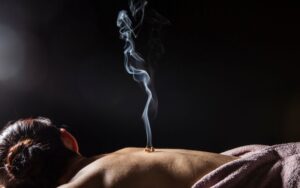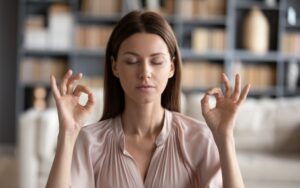Moxibustion for headaches is a traditional Chinese medicine technique that has been used for centuries to alleviate chronic pain, including chronic headaches.
Moxibustion involves the burning of dried mugwort (moxa) on or near specific acupuncture points on the body to stimulate healing and promote overall well-being.
Headaches are a common ailment that can range from mild tension headaches to debilitating migraines.
Many individuals turn to moxibustion as a natural alternative or complementary therapy to alleviate their headache symptoms.
Research has shown that moxibustion can help improve blood flow, reduce inflammation, and release tension in the body, all of which can contribute to headache relief.
Let’s dive deeper to learn more about Moxibustion for Headaches so you can have a better understanding of this topic.
How Does Moxibustion Work for Headaches?
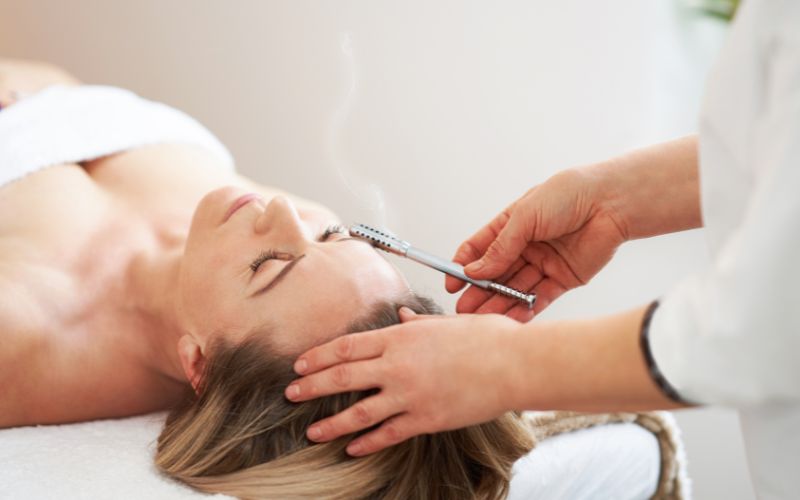
Moxibustion works for headaches by targeting specific acupuncture points on the body that are believed to be related to headache symptoms.
By applying heat from burning moxa to these points, moxibustion stimulates the flow of Qi (vital energy) and blood in the body.
In traditional Chinese medicine theory, headaches are often seen as a result of an imbalance or blockage of Qi and blood flow.
By using moxibustion to warm these acupuncture points, practitioners aim to restore balance and promote healing within the body.
Additionally, the heat generated during moxibustion can help relax muscles, reduce inflammation, and improve circulation in the area where it is applied.
This can help alleviate tension and pain associated with headaches, providing relief for those suffering from chronic or episodic headache symptoms.
The Benefits of Moxibustion for Headaches
One of the key benefits of using moxibustion for headaches is its ability to promote relaxation and reduce tension in the body.
By targeting specific acupuncture points, moxibustion can help release muscle tightness and improve blood circulation, which can in turn alleviate headache symptoms.
In addition to promoting relaxation, moxibustion has also been shown to have anti-inflammatory effects.
Inflammation is often a contributing factor to headaches, so reducing inflammation through moxibustion can help provide relief from headache pain.
Furthermore, moxibustion can help stimulate the body’s natural healing processes.
By increasing blood flow and energy flow within the body, moxibustion can help promote overall well-being and support the body’s ability to heal itself.
Types of Headaches that Can be Treated with Moxibustion
Moxibustion can be used to treat various types of headaches, including tension headaches, migraines, and cluster headaches.
Tension Headaches
Tension headaches are the most common type of headache and are often characterized by a dull, aching pain that can radiate from the neck to the back of the head.
By targeting specific acupuncture points related to tension headaches, moxibustion can help relax muscles and reduce tension in the neck and shoulders, providing relief from headache symptoms.
Migraines
Migraines are another type of headache that can benefit from moxibustion treatment.
Migraines are typically more severe than tension headaches and are often accompanied by other symptoms such as nausea, sensitivity to light and sound, and visual disturbances.
By using moxibustion to stimulate specific acupuncture points that are believed to be related to migraine symptoms, individuals may experience a reduction in the frequency and intensity of their migraine attacks.
Cluster headaches, although less common than tension headaches or migraines, can also be effectively treated with moxibustion.
Cluster Headaches
Cluster headaches are characterized by severe pain on one side of the head, often around the eye area, and can occur in clusters or cycles.
Moxibustion can help reduce inflammation and improve circulation in the affected area, providing relief from cluster headache symptoms.
Overall, moxibustion for headaches offers a natural and effective approach to managing various types of headache symptoms, providing individuals with an alternative to medication or invasive procedures.
Moxibustion for Headaches: A Natural Approach to Pain Relief
Moxibustion for headaches offers a natural and holistic approach to pain relief that can be used in conjunction with other treatment modalities.
For individuals looking for alternatives to medication or invasive procedures, moxibustion can be a safe and effective option for managing headache symptoms.
Research has shown that moxibustion isn’t only effective in treating acute headaches but can also provide long-term benefits for chronic headache sufferers.
By targeting the underlying causes of headaches and promoting the body’s natural healing processes, moxibustion can help individuals experience lasting relief from headache pain.
Applications of Moxibustion for Headaches
There are two main types of moxibustion: indirect moxibustion and direct moxibustion.
Indirect moxibustion involves burning moxa on top of acupuncture needles or ginger slices, while direct moxibustion involves placing a cone of moxa directly on the skin.
Both forms of moxibustion can be used to treat headaches, depending on the individual’s preferences and the specific symptoms they are experiencing.
In addition to using moxibustion directly on acupuncture points related to headaches, herbal medicine may also be incorporated into the treatment.
For example, a combination of moxibustion and herbal remedies can help address underlying imbalances in the body that may be contributing to headache symptoms.
It is important to consult with a qualified practitioner of traditional Chinese medicine before beginning moxibustion treatment for headaches.
They can assess your symptoms and health history to create a personalized treatment plan that is tailored to your specific needs.
Clinical Efficacy of Moxibustion for Headaches
Numerous studies have demonstrated the clinical efficacy of moxibustion for treating headaches.
A study published in the journal “Zhongguo Zhen Jiu” found that moxibustion was effective in reducing the frequency and intensity of tension-type headaches.
Another study published in “Current Pain and Headache Reports” showed that moxibustion was beneficial in managing medication-overuse headaches, a common condition resulting from overuse of headache medications.
Research has also shown that moxibustion can be used as a complementary therapy for chronic tension-type headaches, with patients experiencing significant improvements in headache duration and intensity after receiving moxibustion treatments.
Overall, the evidence supports the use of moxibustion as a safe and effective treatment option for various types of headaches, providing individuals with a natural alternative to conventional therapies.
Incorporating Moxibustion into Your Headache Treatment Plan
If you are considering incorporating moxibustion into your headache treatment plan, it is important to work closely with a qualified practitioner of traditional Chinese medicine.
Here are some steps to help you integrate moxibustion into your overall headache management strategy:
Consultation and Assessment
Schedule an initial consultation with a licensed acupuncturist or practitioner of traditional Chinese medicine.
During this appointment, discuss your headache symptoms, medical history, and treatment goals.
The practitioner will assess your condition and create a personalized treatment plan that may include moxibustion.
Treatment Sessions
Depending on your individual needs, the practitioner may recommend regular moxibust ion sessions to help alleviate headache symptoms.
These sessions may involve either indirect or direct moxibustion techniques, as well as the use of herbal medicine.
Follow-up Care
After each moxibustion session, it is important to follow any guidelines provided by your practitioner for post-treatment care.
This may include recommendations for self-care practices, dietary changes, or additional therapies to support your overall health and well-being.
Monitoring Progress
Keep track of your headache symptoms and any changes you experience throughout moxibustion treatment.
Communicate openly with your practitioner about any improvements or concerns so that adjustments can be made to your treatment plan as needed.
By integrating moxibustion into your headache management plan, you can harness the powerful benefits of this ancient healing technique to help alleviate chronic pain, improve blood flow, and promote overall well-being.
With the guidance of a qualified practitioner, you can experience relief from headaches and enhance your quality of life through the practice of moxibustion.
Discover The Path to Enhanced Well-Being with Lau Of Natural Healing Wellness Classes
Our comprehensive offerings encompass a spectrum of holistic practices tailored to nurture your physical and emotional health.
From Acupressure to Neck Pain Relief meditation, our classes cater to individuals seeking to optimize their wellness journey.
Distinguished by our commitment to natural healing modalities, we integrate the power of herbs and energy-based therapies to promote holistic healing and vitality.
At Lau Of Natural Healing, we recognize the innate potential within each individual to achieve wellness.
Take the first step towards a healthier, more balanced life with Lau Of Natural Healing Wellness Classes.
Conclusion
In conclusion, moxibustion for headaches offers strong benefits and is effective in managing various types of headache conditions.
By working with a knowledgeable practitioner of traditional Chinese medicine, you can create a personalized treatment plan that addresses your specific needs and supports your overall health.
Consider incorporating moxibustion into your headache management strategy to experience natural relief and improved well-being.
FAQs Related to Moxibustion for Headaches
Moxibustion is generally considered safe when performed by a qualified practitioner. However, it may not be suitable for everyone, especially those with certain health conditions such as skin sensitivities or allergies. It is important to consult with a healthcare provider before starting moxibustion treatment for headaches.
The number of moxibustion sessions needed to see results can vary depending on the individual and the severity of their headache symptoms. Some people may experience relief after just a few sessions, while others may require regular treatments over a longer period. Your practitioner can guide the recommended frequency and duration of treatment for optimal results.
Yes, moxibustion can be used in conjunction with other headache treatments such as acupuncture, herbal remedies, and lifestyle modifications. Integrating multiple therapies can enhance the overall effectiveness of your treatment plan and provide comprehensive support for managing headaches.
Side effects of moxibustion are typically minimal and may include temporary redness or warmth at the treatment site. However, serious adverse reactions are rare when performed by a trained practitioner. It is important to communicate any concerns or discomfort with your practitioner during treatment to ensure a safe and positive experience.


